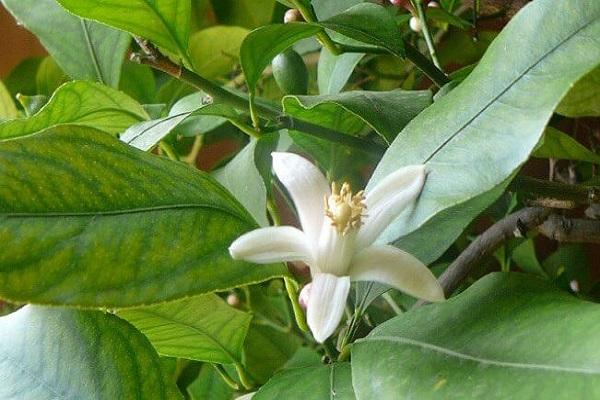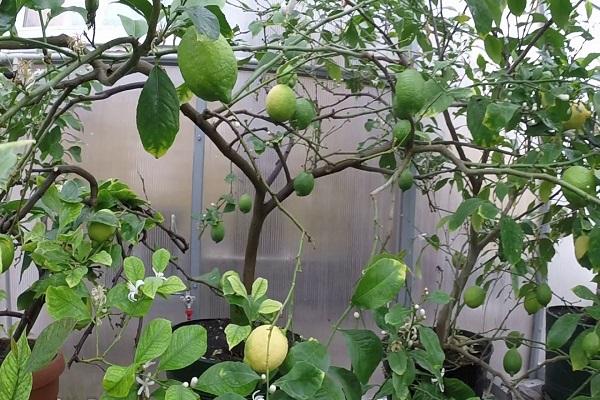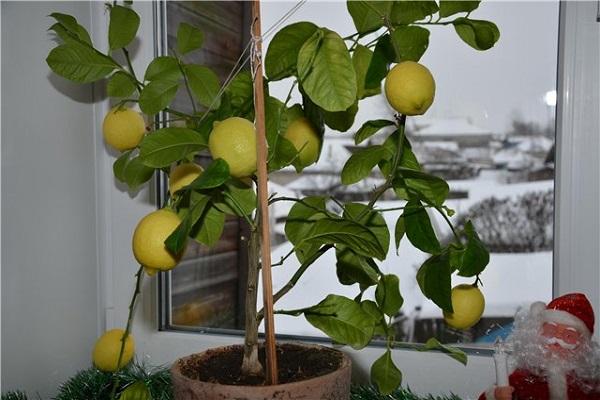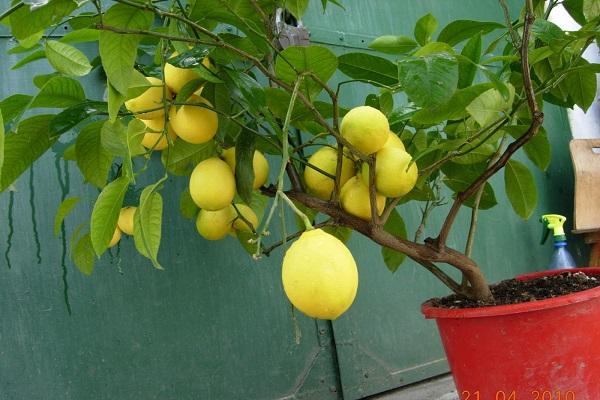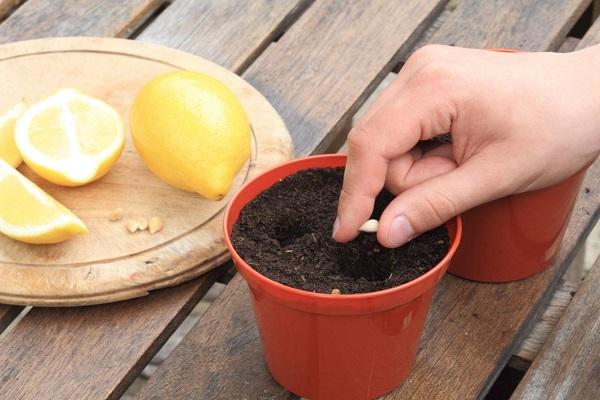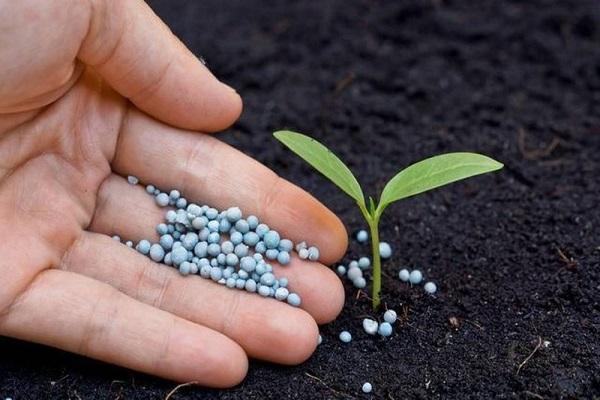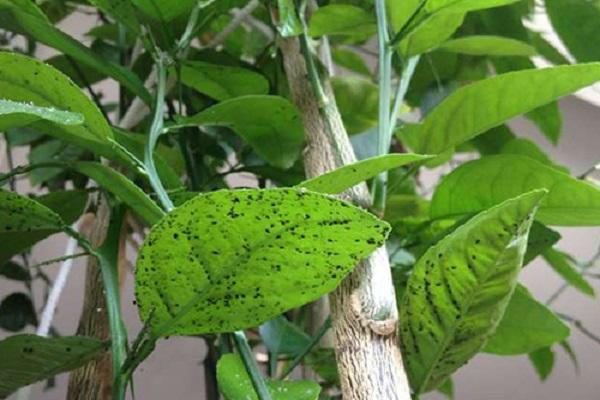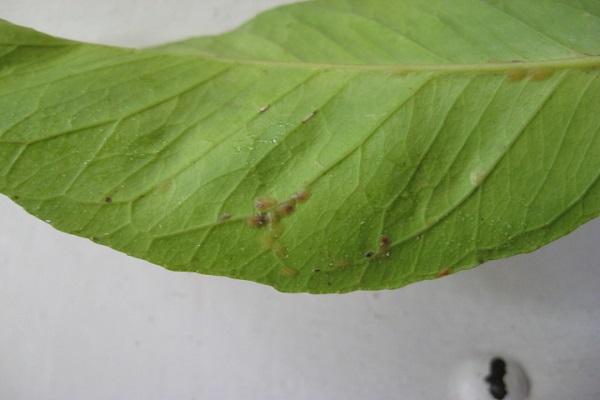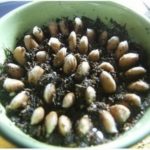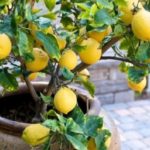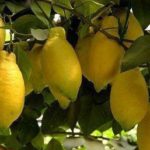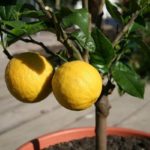Citrus growers who are interested in growing plants in apartment conditions are familiar with the name Pavlovsk lemon. The variety is unpretentious, forgives mistakes for beginners, and pleases with good quality fruits. It has been successfully cultivated for many decades in a row, passing on the accumulated experience and knowledge about the characteristics of the plant.
- Description and characteristics of the tree
- Appearance of the tree
- Description of colors
- Fruit
- Methods for propagating Pavlovsky lemon
- Seeds
- Cuttings
- Features of growing at home
- Planting container
- Soil preparation
- Planting a plant
- Rules of care
- Watering
- Fertilizer
- Lemon transplanting and pruning
- Diseases and pests of indoor lemon
- Pests
- Diseases
- Harvest and storage
Description and characteristics of the tree
Indoor lemon is popular due to its yield and ease of care; its fruits have all the necessary complex of vitamins and microelements that are found in store-bought fruits.
Appearance of the tree
The lemon tree reaches a maximum height of 1.5 meters. The crown is round in shape, with strong foliage. Its diameter reaches almost 1.5 meters. The bark of young shoots is dark green, while the skeletal branches are olive-gray. The branches have sharp spines.
The leaves of the Pavlovsky variety are large, pointed, and have a wedge-shaped base. Their shape can vary from oval to oblong. The foliage color is bright green, glossy.
Description of colors
The flowers of Pavlovsk lemon are bisexual and large. They are formed in several leaf axils. Flowering occurs in early spring or autumn.
Fruit
In Pavlovsk lemon, fruits begin to form 4 years after planting the seedling. In the first years, fruiting is poor, but at the age of 15-20 years the tree begins to produce abundant harvests. After flowering, citrus fruits grow for 10 months, but ripen in just 1 month. If there is a deficiency of sunlight, this process takes up to 1 year. One plant bears up to 10 fruits.
Often they do not have seeds, at the stage of technical ripeness they acquire a yellow color and become juicy.
Methods for propagating Pavlovsky lemon
The Pavlovsky lemon variety can be propagated in several available ways that give good results.
Seeds
Seeds intended for sowing Pavlovsk lemon are extracted from the fruits, the largest and most viable ones are selected. They should not be dried or exposed to air for long periods of time.Immediately prepare small pots or wooden boxes, pour a mixture of peat and flower soil into them, having previously laid a drainage layer on the bottom. The grains are deepened into the ground 1 cm, after which they are watered with a sprayer.
The containers are left in a warm room, placed on a well-lit windowsill. Periodically moisten the soil, avoiding sudden temperature changes. After a couple of weeks, the first shoots appear. In order for the plant to develop well, greenhouse conditions are created before the first leaves appear.
Cuttings
To propagate Pavlovsk lemon by cuttings, you will need to cut a branch about 10 cm long from healthy autumn growth. The cut is made at an acute angle. The selected cutting must contain at least 4 leaves, the bottom 2 of which must be removed. Before planting in the ground, the cuttings are treated with a growth stimulator or crushed coal. The twig is placed in the prepared container at a right angle, a drainage layer is placed on the bottom, then leaf soil is poured. The top layer is made from a mixture of sand and sphagnum moss. They create greenhouse conditions and wait for rooting, which occurs after a couple of weeks.
Features of growing at home
Under normal home conditions, Pavlovsk lemon produces good harvests, providing owners with a supply of vitamins for the whole year. This will require proper care and the creation of comfortable conditions.
Planting container
A container for growing Pavlovsk lemon can be made from:
- ceramics;
- wood;
- plastics.
Each material has its own advantages and disadvantages, but in all cases a drainage layer must be laid on the bottom. Before planting the plant, a wooden vessel should be treated with an infusion of ash or lye.The size of the container is selected so that the diameter of its upper part is equal to the height. If you need to replant a tree, choose a pot a few centimeters larger than the previous one.
Soil preparation
Pavlovsk lemon grows well in soil consisting of:
- sand;
- turf soil;
- leaf humus;
- any manure.
You can purchase ready-made soil mixture or mix all the components yourself. In the latter case, it will be necessary to disinfect the prepared soil.
Planting a plant
If you manage to root a Pavlovsk lemon cutting, then over time you will need to plant it in a permanent pot. This is done 3 months after successful rooting, having previously prepared a nutrient substrate and a pot of the required diameter.
Rules of care
When growing indoor lemons, the main focus is on caring for them.
Watering
Young trees require more frequent and abundant watering than adults. In the summer, Pavlovsk lemon requires not only root irrigation, but also spraying of the leaves. In winter, the amount of moisture decreases. When growing a plant in a ceramic pot, you will need to water more frequently because the soil dries out faster. It is advisable to irrigate plants in the morning or evening.
Fertilizer
A sign that citrus requires soil fertilization is yellowing or falling leaves. From mid-winter until autumn, complex mineral supplements are applied. When the plant reaches two years of age, it will need phosphorus-potassium fertilizers, which are applied once every 2 weeks.
Pavlovsk lemon responds gratefully to the application of organic fertilizers, which are used as litter. During the winter period the following is added:
- wood ash;
- boric acid;
- acetylsalicylic acid.
Lemon transplanting and pruning
Lemon transplantation is carried out once every 2 years. During this period, the root system occupies all the free space in the container. During the transplantation process, they try to remove all diseased or rotten roots. After completion of the work, the tree is watered abundantly and installed in a permanent place.
With the help of pruning, Pavlovsk lemon is given a beautiful and well-groomed appearance. In early spring, new branches are plucked from the young tree at a distance of 5 cm from the end. An adult plant can be given any shape you wish.
Diseases and pests of indoor lemon
Indoor lemon varieties are exposed to pests and diseases. Pavlovsky is no exception, so it is important to carry out preventive measures in a timely manner.
Pests
The first sign that a plant has been exposed to pests is the curling or bending of leaves, their falling and discoloration, deformation of flowers, falling buds and ovaries. Lemon Pavlovsky can be attacked by:
- scale insect;
- aphid;
- spider mite;
- whitefly;
- earthworm;
- thrips.
To avoid troubles and not be left without a harvest, you should do preventive measures in time and treat the tree with preparations specially designed for this purpose.
Diseases
Pavlova lemon is susceptible to the following diseases:
- gommosis;
- leaf spot;
- anthracnose;
- powdery mildew.
To combat them, the drug “Fitosporin-M” is effectively used, which is not addictive. It is noteworthy that viral diseases are almost untreatable.
Harvest and storage
The fruits of Pavlovsk lemon begin to ripen in November. This period lasts until May (its duration is approximately 200 days).The fruit remains green for a long time, but when fully ripe it turns bright yellow. During this period it can be plucked. Citrus fruits can hang on the tree for a long time, so there is no need to pick the entire crop at once. If there is a need for this, then the fruits are placed in boxes and sent to the basement or to the refrigerator, where they can retain their qualities longer.

